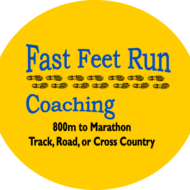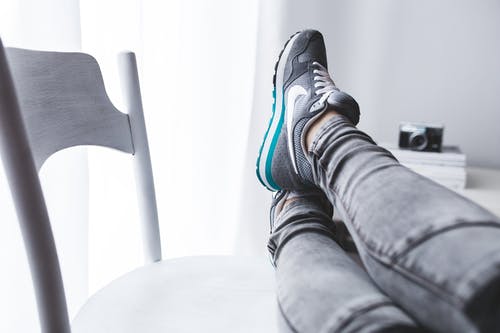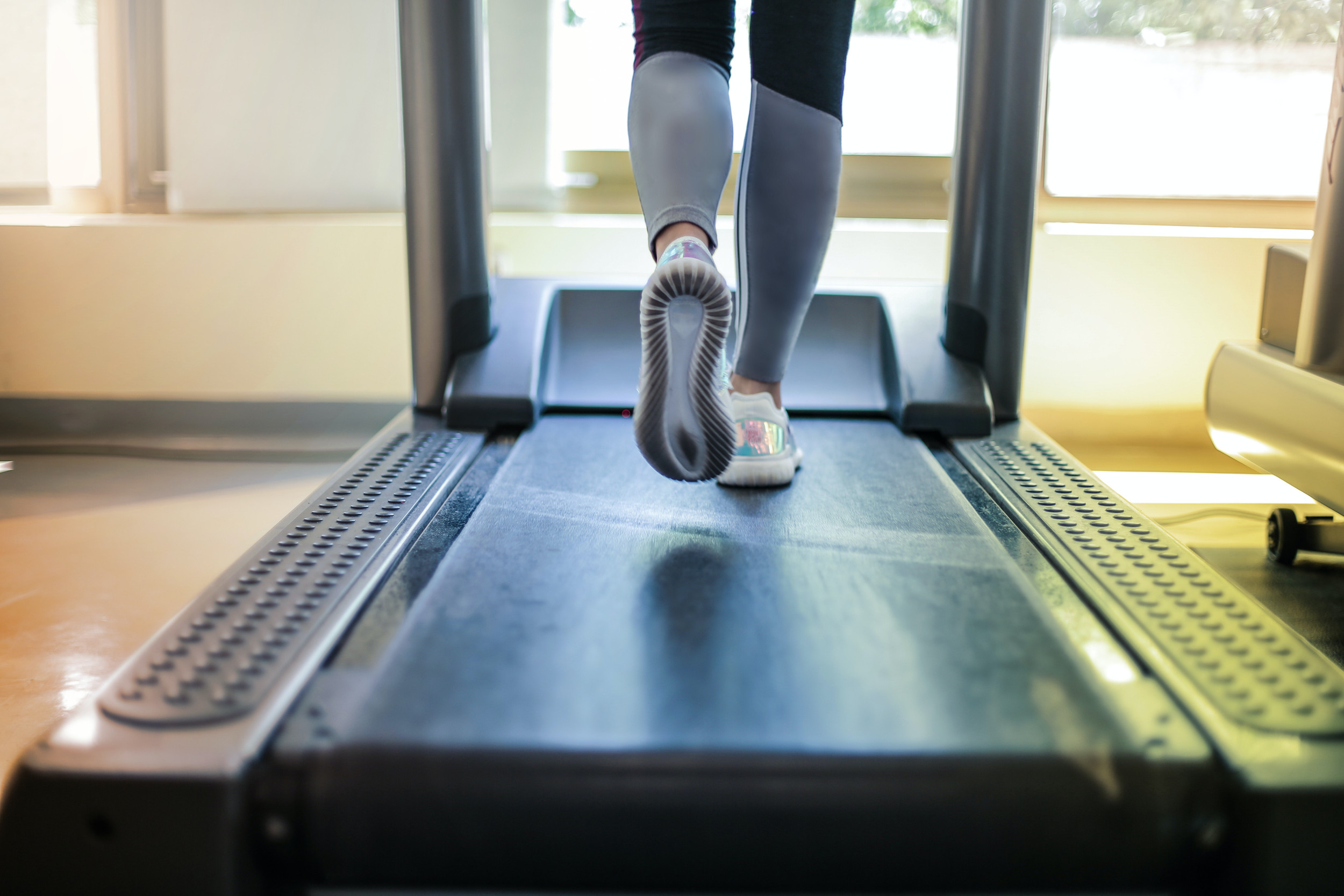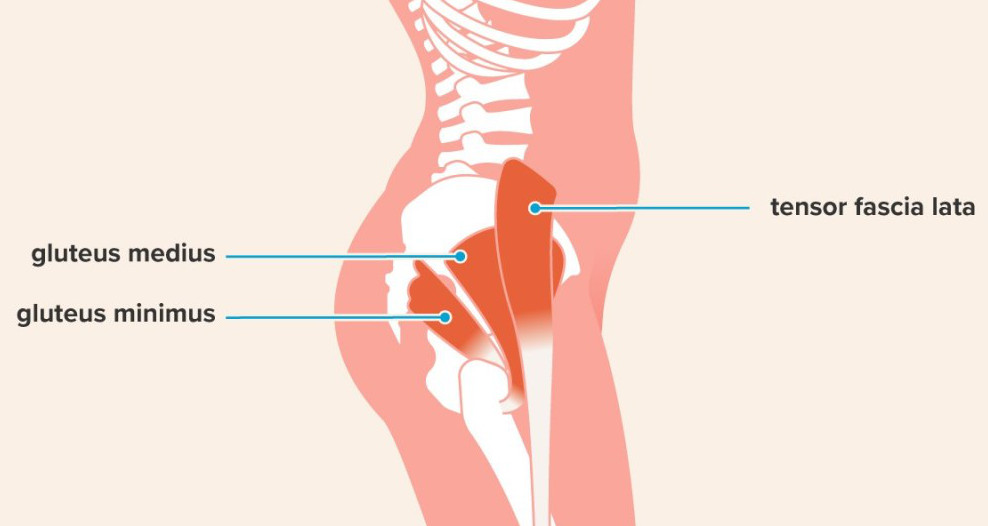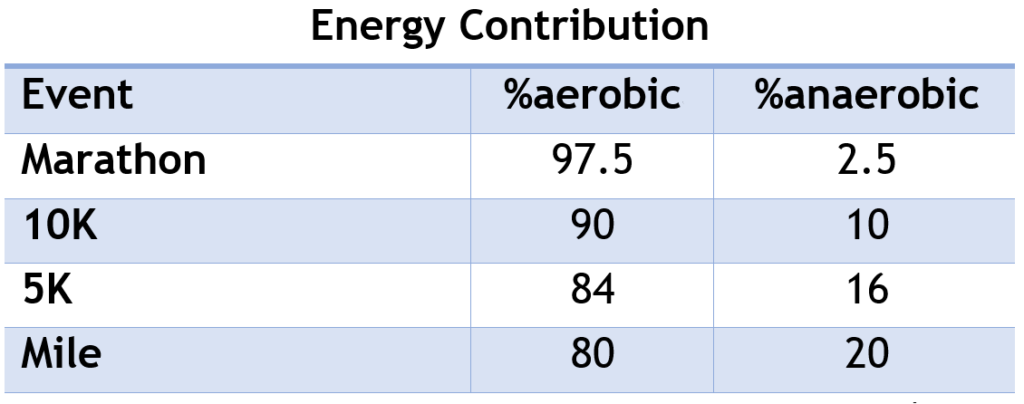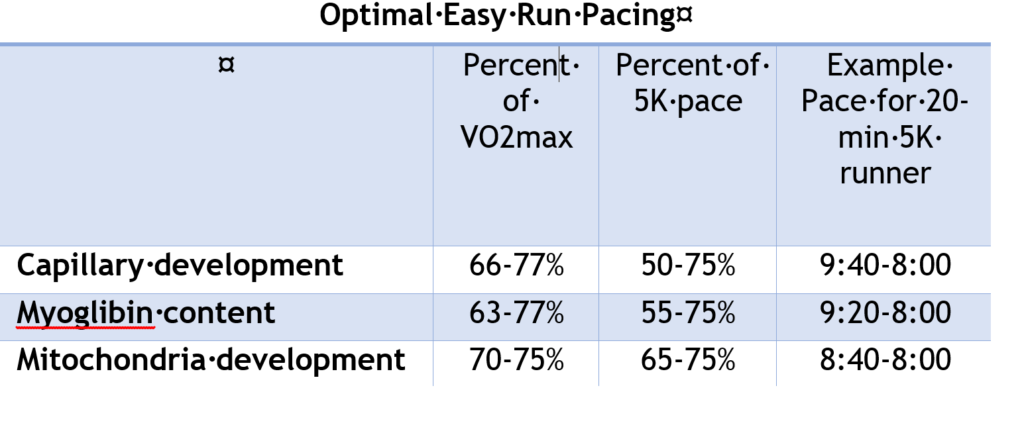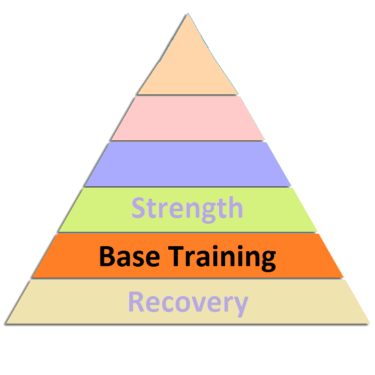
Glossary of Common Running Terms
Running is like most other sports or professions and has developed its own language. In this article, I have compiled many common terms to help the reader understand more of the lexicon and provide a common language for us. The terms are first presented in alphabetical order.
Term – Definition / explanation
10% rule – A general guideline which discourages increasing your weekly mileage by more than 10% each week
10k – 6.2 miles; 10,000 meters
10-K pace – 10-K pace, when used in a workout to describe how fast to run, is simply the pace of a runner’s last 10-K race. 10-K pace is therefore different for every runner; for a 62-minute 10-K runner, 10-K pace is 10 minutes per mile; for 31:00, it’s 5 minutes per mile
1200 meter – 3/4 mile, three laps around a standard track
1500 meter – .93 mile, metric mile, 3 3/4 laps around track
15k – 9.3 miles; 15,000 meters
200 meters – 1/2 lap around a standard track
400 meters – 1/4 mile, one lap around a standard track
5k – 3.1 miles; 5,000 meters
50k – 31.1 miles
5-K pace – 5-K pace, when used in a workout to describe how fast to run, is simply the pace of a runner’s last 5-K race. 5-K pace is therefore different for every runner; for a 31-minute 5-K runner, 5-K pace is 10 minutes per mile; for 16:00, it’s 5 minutes per mile
800 meters – 1/2 mile, two laps around a standard track
Aerobic – Used to refer to running or other exercise at an intensity that’s sufficiently easy for your respiratory and cardiovascular systems to deliver all or most of the oxygen required by your muscles, and slow enough that lactic acid doesn’t appreciably build up in your muscles. Generally, you can sustain a slow aerobic pace for long periods of time, provided you have the endurance to go long distances.
Aid Station – An official section containing things like water, sports drink, and fuels during a race; often spaced evenly throughout a race course
AIMS – Association of International Marathons and Road Races. More information can be found at www.aims-association.org.
Altitude training – Specific training at over 1,500 meters/5,000 ft for several weeks to trigger increased red blood cell production which can boost endurance
Anaerobic – Without oxygen, usually used to describe very high intensity exercise (going anaerobic)
Anaerobic threshold (AT) – The transition phase between aerobic and anaerobic running. Good training will increase AT by teaching the muscles to use oxygen more efficiently, so that less lactic acid is produced. Also known as lactate threshold.
ASOIF – Association of Summer Olympic International Federations. More information can be found at www.asoif.com.
Base training / running base – Running that builds a solid foundation of aerobic fitness and muscle strength over a period of weeks or months before starting a focused training plan
Bib – The race number that you attach to your clothing before the race
Black toenails – Bruising to the nail bed caused by excess pressure or pounding during running (often during downhills); the toenail will be sore post-race and you may end up eventually losing the nail
Bling / hardware / medal – The finisher’s prize given out which usually takes the form of a medal, belt buckle, mug, hunk of wood, etc. Some runners are known to look this up in advance before signing up for a race
Bloody nipples – Chaffing to men’s nipples that causes bloody patches on their shirt—usually the man is wearing white
Body Glide – A brand of roll on anti-chaffing lubricant to prevent chaffing; there are many brands of anti-chaffing products but are sometimes just called body glide
Bonk – See hitting the wall.
BQ – One of the most coveted standards in running, BQ refers to a Boston-qualifying marathon result in any marathon with a certified course. In recent years, it’s been harder and harder to gain entry to the Boston Marathon, both because the qualifying standards have gotten slightly faster and because more people have tried to qualify in some of the more popular age groups. Still, earning a BQ is a true badge of honor, even if you don’t get in or choose not to race it that particularly year.
Brick workout – Brick workouts are a favorite of triathletes in training. It means doing two different workouts back-to-back; think a bike ride and a run or a swim and a ride. While seemingly masochistic, especially when you are in the midst of it, the intent of the workout is to get your body and brain used to switching disciplines and training under simulated race fatigue.
Cadence – This is your number of footfalls per minute. And, of course, faster is usually better. The ideal number for running—meaning most efficient with a reduced likelihood for injuries–is about 180 steps per minute. To help with the math, that’s 90 footfalls per foot per minute.
Certified course – Most marathons and half-marathons are certified by USA Track & Field which makes sure that the distance of the race is accurately measured. For any running performance to be accepted as a record or for national ranking it has to be run on a USATF-certified course
Chaffing – An irritation or rubbing of the skin caused by skin to skin or skin to fabric contact made worse by the presence of moisture and heat
Chip time – A technology for sensing and recording the finishing times of all the runners in a race. It’s much more accurate and can easily deal with the old problem of many runners finishing nearly at once in a big, crowded race. The chip is a tiny electronic chip that’s programmed with your specific runner identification. You attach the chip to your shoe laces. It sends a signal to an electronic reading device–often hidden under a strip of carpet– when you cross the start line and again when you cross the finish line. No human observation is necessary. Your exact time is recorded automatically. Usually you are asked to turn the chip back in to the race organizers.
Climb – Often refers to a hill or stretch of elevation gain during trail running
Clock time – The time recorded from when the race first begins
Clydesdale / Athena – A category to describe a heavier runner—typically over 150lb for a woman and 200lb for a man
Compression socks/gear – A garment that provides graduated pressure to help improve blood circulation and provide support to body parts
Cool down – Slowing your pace significantly for a couple minutes at the end of your run, then walking to further cool down and slowly lower your heart rate to avoid letting blood pooling in your extremities
Core / core training – Specific strengthening exercises targeting the core muscles which include the muscles in the abdominals, back and pelvis
Corral – A designated area for runners of a certain pace or who hope to run a certain race time at the start line of a race, this can be strictly or informally controlled
Cushioned – A shoe designed with extra softness sometimes preferred for those with a more rigid foot
Cutdown intervals – Decreasing intervals; 800m- 600m- 400m- 200m Pyramid combining intervals; 200-400-600-800-600-400-200
DNF – Did not finish.
DNS – Did not start.
DOMS (delayed onset muscle soreness) – Discomfort, stiffness, or soreness in a muscle related to microscopic tears of a muscle doing more work than it’s used to, typically noticed primarily 24-72 hours post-workout
Double track – Trail running term referring to a trail wide enough to allow for two people abreast
Doubles – Doing two runs in one day
Drop – Also known as heel to toe drop or heel-toe offset, heel-toe differential, or heel-toe lift in a shoe; it is the difference between the heel height and the forefoot height in a shoe; expressed in millimeters
Drop bag – A collection of items that you think you’ll need during an ultra race that is transported by the race to a specific location for you. This can be handy if you don’t have a crew
Dynamic Drills – Dynamic drills are what you do to get warmed up and activate muscles before your run. When done right, you’ll definitely get your heart pumping and the sweat flowing without static stretching of cold, rigid muscles. Examples are: high knees, butt kicks, skipping, walking lunges, toy soldiers and fast footwork like grapevines.
Dynamic stretching – Stretching involving movement which is most beneficial for runners
Easy run/recovery run – An easy, steady pace for recovery or enjoyment; improves aerobic conditioning; intensity should permit conversation and be no more than 60-70% maximum heart rate
Elevation gain – The amount of feet or meters that the course goes up during a run or race
Elliptical – An exercise machine that mimics the running motion in a low impact manner
Endorphins – Brain chemicals which cause feelings of euphoria and the runners high
Endurance – The ability to run for long periods of time
Even split – Running the first and second half of a race at a consistent pace
Fartlek – This is a Swedish word for speed play—Swedes know how to have fun! No, it has nothing to do with breaking wind. The playful aspect of these is that you get to determine distance, speed and how many you do, but the goal is to keep them relatively short and speedy. Once you’re warmed up, step up your pace between trees, light posts, the red car parked on the corner, whatever works for you. Do a set of five to 10, return to your regular pace and repeat, if desired. These are good mid-run, pick-me-ups if you feel like your pace is lagging or your mind has wandered.
FKT – Fastest known time
Flat/low arch – Foot often overpronates inward for shock absorption which can lead to ankle and knee problems- entire arch region filled in with paper bag test
Foam roller / rolling – Self myofascial release using a cylindrically shaped firm foam roller
Foot strike – How and where your foot hits the ground as you run: heel strikers- heel hits the ground first, midfoot striker- mid to ball of foot hit the ground first, forefoot striker- ball of foot to toes hit the ground first
Forefoot Striker – A runner who primarily lands on the forefoot when running at any speed. Most runners are not forefoot strikers all the time. In fact, studies have shown that less than 2 percent of runners actually run that way.
Fuel – Term that refers to any food or calories taken in before or during running to keep your energy up, can be anything from traditional exercise fuels to real food options
Fuel belt – A belt that allows you to carry one or more bottles for liquid around your waist area
Gait – Describes how we run or walk and consists of two phases: stance where part of the foot touches the ground and swing during which the same foot doesn’t touch the ground
Gaiters – Gear that attaches to your shoes and goes up your ankle or leg to keep out dirt, rocks and other debris
Garmin – A company that makes a number of GPS watches; also slang for whatever running watch you have (I forgot to stop my Garmin at the end of the race)
Gear and Shoes – Gear and Shoes
Gear Check – A bag of items that you’d like available at the end of the race. Usually placed in a designated bag and transported from the starting area to the finish by race officials
Glycogen – The storage form of glucose (sugar) found primarily in the liver and muscles
GPS – Global positioning system; to track location, velocity and time anywhere in the world
Gu / gel / chomps / blocks – Various types of fuels for running; a gu/gel usually has a thicker gel-like consistency; chomps/blocks/gummies are usually more solid and need to be chewed
Half Marathon – 13.1 miles; 21.1k
Hand-held – Refers to a bottle that you can carry in your hand as you run
Heart rate (HR) – The contraction of the heart, usually measured as beats per minute (bpm)
Heart rate monitor (HRM) – A device that measures the electrical activity of the heart; this may be through a wrist based monitor, chest strap, or in ear monitor
Heat Index – The combined effects of the temperature and humidity in the air
High arch – Foot does not roll much with ground contact which doesn’t absorb as much shock; will just see ball of foot and heel on paper bag test
Hill repeats – Run up hill then down, repeat for determined number of times or distance
Hills – Important to build leg strength and endurance; run in a hilly area or set the treadmill at an incline
Hitting the wall / Bonk – A state of exhaustion where your glycogen stores are depleted and blood sugar levels are low; this sometimes hits from mile 18 on in a marathon without proper fueling
Hydration pack – A lightweight breathable backpack that contains a bladder and hose to carry water or other fluids that you can drink on the go, usually also contains other pockets for storing fuels and other necessities
IAAF – International Association of Athletics Federations; the worldwide organization that governs running
Ice bath – Submersing in cool to cold water for 10+ minutes after a hard workout to reduce inflammation; also see torture
Illiotibial Band Syndrome (ITBS) – Inflammation of IT band which runs on the outside of the leg from the hip to just below the knee; most often occurs where the band crosses over the outside of the knee and also at hip
Intervals – Training in which short, fast repeats or repetitions often 200 to 800 meters, are alternated with slow intervals of jogging for recovery; usually based on a rigid format such as six times 400 meters fast [these are the repeats] with 400-meter recovery jogs [the intervals], interval training builds speed and endurance.
IOC – International Olympic Committee. More information can be found at www.olympic.org.
Kick – A fast finishing sprint at the end of a run or race
Lactate threshold – See anaerobic threshold.
Lactic acid – A substance which forms in the muscles as a result of the incomplete breakdown of glucose. Lactic acid is associated with muscle fatigue and sore muscles.
Ladder intervals – A workout where increasing intervals are run with recovery jogs in between; 200m-400m-600m-800m
Long run – The weekly mileage buildup, the most important run of the week consisting of 25-30% of your weekly mileage, depending your on goal race and experience level it could be from 4-26 miles
Loop – Starting your run or race at one point and then running in a big circle to end at the same location
LSD – Long slow distance
Marathon – 26.2 miles; 42.2k
Marathon pace – The pace you plan to hold during your goal marathon; many training plans will call for some marathon pace runs
Master – An athlete 40 years of age or older
Maximum Heart Rate (MHR) – The highest number of contractions your heart can make in one minute; a common way to estimate this is to take 220- your age
Midsole – The area of the shoe between the upper and outsole that’s primarily responsible for the shoe’s cushioning. Most midsoles are made of foams: either EVA (ethylene vinyl acetate) or polyurethane. EVA is lighter and more flexible than polyurethane, but it also breaks down more quickly. Many midsoles also have additional cushioning elements such as air, gel and various embedded plastic units.
Mile – 1609 meters, 5280 feet, or 1760 yards. Note: 1600m is not a mile.
Minimalist Running Shoes – Minimalist shoes are low-to-the-ground shoes that have little material (rubber, foam, etc.) Between a runner’s foot and the ground.
Motion control – The ability of a shoe to limit overpronation.
MPM – Minutes per mile
MPW – Miles per week
Negative split – Running the second half of a race faster than the first half; ideal way to pace most races
Normal/medium arch – Refers to an arch that ideally supports your body weight and pronates normally under load- half of arch region filled in with paper bag test; most common foot type
Orthotics – Shoe inserts to correct biomechanical problems
Out and back – A course where you run out a certain distance and then turn around and run back the same way
Outsole – The material, usually made of hard carbon rubber, on the bottom of most running shoes; the layer of the shoe that contacts the ground.
Overpronation – The excessive inward roll of the foot before toe-off. Overpronation is believed to be the cause of many running injuries.
Overtraining – Doing too much in training which can lead to fatigue, injury, or burn out
Pace – A measurement of speed of running, usually measured as how many minutes it takes you to run a mile or kilometer
Pacer – This is someone who runs with you to help keep you on pace, this can range from a running partner to a sanctioned pacer during a race. Using unofficial pacers (an unregistered runner) during a race is not allowed
Peak – Scheduling your training so that your best performance is timed for a race
Pick-ups – Accelerations done during a run, normally done in shorter durations than fartleks. Pick-ups are simply another way to spice up what would otherwise be an easy-run day.
Piriformis Syndrome (PS) – Irritation of the sciatic nerve caused by compression of the nerve within the buttock by the piriformis muscle
Plantar fascitis (PF) – Involves pain and inflammation of a thick band of tissue, called the plantar fascia, that runs across the bottom of your foot and connects your heel bone to your toes
Plyometrics – Bounding exercises; any jumping exercise in which landing followed by a jump occurs.
Point to point – A course that begins and ends at widely separated locations
Positive split – Running the second half of the race slower than the first half
Post (or medial post) – Firmer density of midsole material added to the inner side of the shoe. A post is designed to reduce overpronation.
PR/PB – Personal Record or personal best; the fastest time you’ve done for a given distance
Pronation – Refers to the inward roll of your foot during part of your running stride
Pylometrics – A type of exercise designed to produce fast, powerful movements; the muscle is loaded and contracted in rapid sequence
Quad buster – Long downhill stretches of running
Rest day – No running or intense physical activity, an important day to rest your body and mind
Resting Heart Rate (RHR) – Your heart rate when you first wake up in the morning and before getting out of bed
RICE – Rest, Ice, Compression, and Elevation; used to treat certain injuries
Ride – The feel of a shoe during the foot strike, should be a smooth feeling but this is subjective
Road runner – A runner who does most of their training and races on the roads
RRCA – Road Runner’s Club of America
Run/walk/run or Galloway Method – A system of planned running and walking intervals during a run or race, can be anywhere from a certain distance to time ratio, distance/distance ratio, or time/time ratio
Runner’s High – A happy and relaxed feeling that can happen during or after a run from the release of endorphins
Runner’s Knee or (Patello-Femoral Syndrome) – The kneecap (patella) rubbing on the front of the thigh bone (femur) causing pain under or around the kneecap
Runners trots – Gastrointestinal (GI) problems on the run resulting in diarrhea
Running economy – Refers to how much oxygen you use when you run. When you improve your economy, you are able to run at a smaller percentage of max VO2 (your maximum rate of oxygen utilization).
Second wind – Feeling more energy and using less effort after running for at least 15-20 minutes
Shell – Lightweight jacket worn over other clothing which is useful for mildly cool temps; can be compressed to fit in a pack
Single track – A trail running term referring to a course that is only wide enough to allow for one runner at a time
Singlet – A technical tank top worn while running, often used for races
Speedwork – Increasing the pace of your run according to a schedule to improve leg power, strength, and confidence; training yourself to go faster
Splits – A race or run’s total time divided into parts (usually km or miles)
Static stretching – A stretch held in a challenging but comfortable position typically for 10-60 seconds
Stitch – Side cramp
Stress fracture (SFX) – A hairline crack in the bone
Stretching – Movements to increase muscle, ligament, and joint flexibility; best done after exercise when the muscles are warm
strides – Short, fast, but controlled runs of 50 to 150 meters. Strides, which are used both in training and to warm up before a race, build speed and efficiency.
Supination – Foot does not have a sufficient inward roll or even may roll to the outside during the running stride
Swag – The goodies or items given either before or after a race- this can include coupons, samples, food items, apparel, cups/mugs, etc
Taper – Decreasing mileage and intensity for several days to three weeks before a race to ensure peak performance
target heart rate – A range of heart rate reached during aerobic training, which enables an athlete to gain maximum benefit.
Technical – A trail running term referring to how challenging or difficult the trail is- a highly technical trail would include things like natural obstacles (water crossings, rock climbs, steep up and down hills, ungroomed trails, etc)
Technical / tech shirt or gear – A running shirt made of wicking fabric
Tempo Run (aka Lactate Threshold or Threshold Run) – Sustained effort training runs, usually 20 to 30 minutes in length, at 10 to 15 seconds per mile slower than 10-K race pace. Another way to gauge the pace of tempo runs: a pace about midway between short-interval training speed and your easy running pace.
Tendonitis – Inflammation of a tendon
Tights – Form fitting running pants
Timing chip – A device you tie to your shoe or that is attached to the back of your race bib that measures your time when you cross a timing mat in a race
Timing mat – An electronic device placed across the course that records your personal time when you cross it, usually found at the start line, halfway point and finish line (but there may be more)
Toebox – The front portion of a shoe’s upper. A wide toebox allows plenty of room for the toes to spread.
Training Log – A training record to increase your motivation, monitor progress, and spot trends in your running, this can be an online log, spreadsheet, or paper
Tri/triathlon – A race which involves swimming, cycling and running, the most common triathlon distances include the sprint (750m swim, 20km bike, 5k run), Olympic or standard (1.5k/40km/10k), ½ Ironman (1.2 miles/56 miles/13.1 miles), Ironman (2.4 miles/112 miles/26.2miles)
Ultra marathon – Any distance greater than 26.2 miles but typically referring to a 50k race or beyond
Underpronator – Underpronation is less common than overpronation. The shoes of underpronators show outsole wear on the lateral (outer) side not just at the heel but all the way up to the forefoot. Typically, underpronators tend to break down the heel counters of their shoes on the lateral side.
Unofficial aid station – A private individual(s) who have a spot to hand out food or liquids during a race—be careful because accepting unofficial aid from anywhere except official aid stations can result in disqualification for awards
Upper – The leather or mesh material that encloses the foot.
USATF – USA Track and Field. More information can be found at www.usatf.org.
USOC – United States Olympic Committee. More information can be found at www.usoc.org.
VO2Max (maximal oxygen consumption) – The maximal amount of oxygen that a person can extract from the atmosphere and then transport and use in the body’s tissues.
Volunteer – A person donating their time to help out during a race
Warm up – Walk for at least 2-5 minutes before starting a slow jog to warm up and loosen the muscles prior to workout
Water/aqua jogging – A cross training exercise in which the running motion is done in a pool or body of water usually using a buoyancy belt so that your feet don’t touch the bottom and the workout is low impact
Wave start – Each corral starts the race staggered anywhere from a few seconds to minutes apart to help with course congestion
Weight training/Strength training – These are sometimes used interchangeably and refer to exercises focused on developing the strength and size of muscles; weight training would involves weights while strength training could use just body weight exercises
Wicking – The ability of a fiber to move moisture from the skin to surface of fabric so it can evaporate and keep you dry
Wind Chill – Refers to the lower temperature caused by a combination of the ambient temp and the wind
WR – World record
XC – Cross country
XT/cross-train – A low-impact activity to perform on the days you don’t run that will increase your conditioning, help prevent injury, and add variety to your workout schedule. Examples: swimming, cycling, elliptical, rowing, walking, weight-training, yoga, pilates, exercise videos, etc)
Zero drop – Equal height between the heel and forefoot in a shoe, this does not necessarily mean it is a minimalist shoe. If you’re transitioning to a zero drop shoe for the first time you should be careful and do this very gradually

